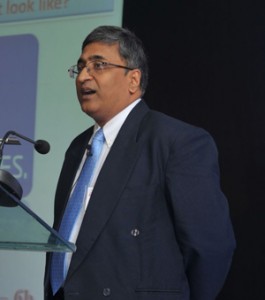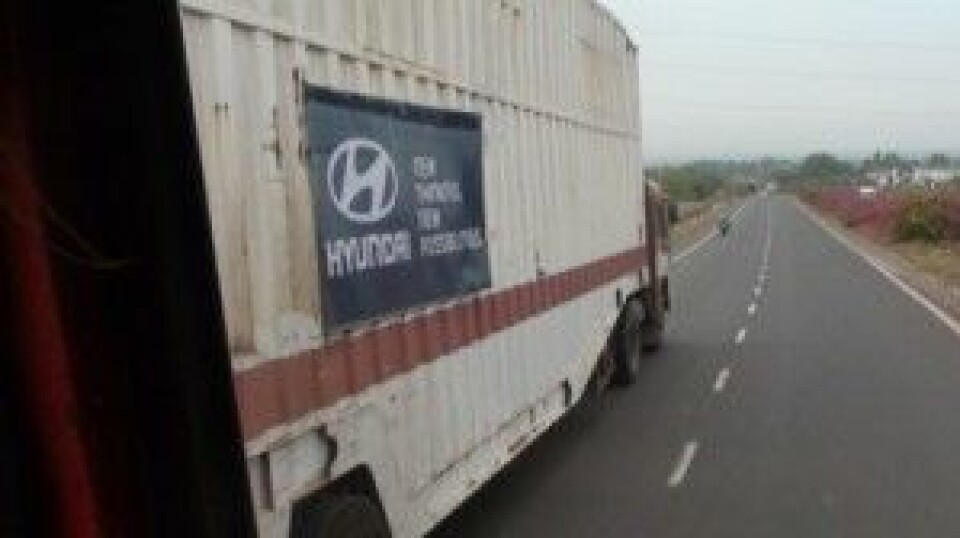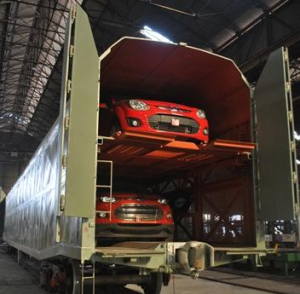Avoiding a national waste – Indian rail reforms
Anand Venkateswaran (pictured), general manager of sales logistics at Hyundai Motor India, talks about the potential benefits and pitfalls of switching to rail for moving vehicles in India.
 Ramesh Kumar: Two years ago, you made a presentation at the Automotive Logistics India Conference with a focus on alternate modes of finished vehicle movement. What has happened since then?
Ramesh Kumar: Two years ago, you made a presentation at the Automotive Logistics India Conference with a focus on alternate modes of finished vehicle movement. What has happened since then?
Anand Venkateswaran: If you look at the movement of Hyundai Motors as far as rail is concerned, it has played a dominant role to certain specific geographies in the country, especially to the northeast. We dispatch 3-4 rakes per month, for approximately 500 cars via Guwahati. Thereafter, the vehicles get disbursed to the hill states by road as last mile or secondary transportation.
Are these scheduled runs?
No, but they are done through pro-active planning with our LSPs. Our experience has shown that when we had one service provider, we were at best able to manage two rakes a month. Then when we added another service provider and it ushered in some competition and we could double the movement by rail. Since fleet availability is limited and tractor dominates vehicle movements, it is a bit of a challenge. So when it came to car dispatches, [rail] was a little subdued and limited.
Who are your LSPs?
TCI Supply Chain Solutions and Mahindra Logistics. This year we added Glovis, who will be directly indenting with the railways.
Are you hoping to beat down prices further?
No. Our goal is to ensure that each of these players is able to place indents in advance with the railways and therefore help us to get priority. It is by design that we try to do this, but how far this will succeed or whether there will be too much competition between the LSPs is yet to be seen.
What advantages have you reaped?
Transit advantage is a big plus. Compared to road dispatch, which takes 13-17 days, rail completes in less than a week. In terms of cost, if you look at an average cost of Rs.400,000 ($6,555) per car and a borrowing cost of 15-16% that the dealers usually pay, the inventory costs savings for 11 days are huge.
Read these other features that make up this special report:
What about logistics cost advantages?
We unfortunately are unable to derive benefit in terms of logistic costs at the moment because the freight structure of the railways currently is not favorable towards movement by rail. However, in the case of Guwahati, because the distance is more than 2,500km, it breaks even with road transport. Service providers make a small margin but that is only just enough to keep them going.
Are you looking beyond the northeast to the rest of India?
This year possibly we will be compelled to look at the western region very closely. This was one of the points which we discussed with APL Vascor. A sort of ‘Look West’ policy! Both these sectors are different. The east doesn’t have a return load while the chances of the west having a return load is there, but the balance between the automotive clusters today is so lopsided that it is difficult to find an even balance.

Maruti Suzuki’s ‘national waste’
Maruti Suzuki has said it will use its own wagons exclusively. Is this gambit compelling players like you to look seriously at rail?
Maruti’s decision would mean a lesser inflow of vehicles from north to south. Maruti is not keen to collaborate with any other OEM today, which is a national waste in the sense that a rake going back empty in one direction does not meet anybody’s purpose, especially when you know that the track capacity in the country is limited, and passengers are given higher priority than goods. What would likely happen is there would be more constraint in the south.
But why should Maruti Suzuki help southern OEMs like you get your vehicles to the north cheaper using its empty backhauls on rail investments that it is making?
Every strategy of any OEM has a counter strategy and every strategy that is developed is at a particular cost. What would happen in the event Maruti runs rakes exclusively for itself? I would say that there would be a displacement of transport companies operating with Maruti. And many of them may shift bases down. If you look at the south, we have Toyota, Ford, Hyundai and Nissan and jointly put together we are a competing force with Maruti. If Maruti has 50% share, the others together have another 50%, which would offer opportunities for balance. The costs will go up.
How critical is this rail movement?
It is absolutely critical, but there are lots of issues in terms of handling primary and secondary distribution. Today no single OEM has got a railway yard or private siding within the plant, so there is always the first mile connectivity problem. This will increase your cost and that is why rail costs are absolutely not competitive when you compare them with any other mode of transport. First mile connectivity problems are common to all the OEMs.
If you look at the major consumption centres, like Bombay, Delhi, Calcutta, Hyderabad, Bangalore or Kanpur, even these places lack a proper rail siding where a car carrier rake can go in and unload cars comfortably. So there is a definite drawback and this is where the railways have to focus in terms of building the basic infrastructure.
How cost effective are the APL Vascor services likely to be?
Well, you know the freight structure currently in place is likely going to be the same for the auto wagons. What’s different is the capacity. Currently, each wagon can at best take five cars, while with auto wagons the number will be 8-10 per wagon, and therefore the overall capacity of an auto rake goes from 125 to 310. That’s an advantage.
Whose responsibility it is going to be building infrastructure for auto movement on rail?
In the south, the railways will possibly take the first step of making an investment on its own to develop a station called Walajabad near Chennai, which is equidistant between Hyundai, Nissan and Ford.
What would make Hyundai Motors green light a big shift towards rail?
Transit time and predictive availability.
"[Rail] is absolutely critical, but there are lots of issues in terms of handling primary and secondary distribution. Today no single OEM has got a railway yard or private siding within the plant, so there is always the first mile connectivity problem." - Anand Venkateswaran, Hyundai Motor India
The last point is dicey because in India since passenger movement takes precedence over freight.
But under the AFTO [Automotive Freight Train Operator] policy, the railways have clearly said that the private operators will be able to maintain their schedules. This is one condition under which they will be operating. We hope that things will improve from the current situation, where we have absolutely no clue as to when the next rake could be available.
 Although the freight rates will be the same, the same auto wagons in India will have more than double the capacity than current wagons
Although the freight rates will be the same, the same auto wagons in India will have more than double the capacity than current wagons
What do you see happening with rail over the coming years?
I don’t have anoptimistic picture like Maruti that says we will be moving 30% of volume by rail. Today, Hyundai is moving 1%. Maybe it will be closer to 10% in the next three years time.
Maruti has already built up massive transport vehicle parks at Bangaluru and Nagpur even without the introduction of the GST (Goods and Service Tax). As India’s second largest carmaker, are you committing a mistake by not having regional hubs?
We not missing out on it because we feel that from the tax point of view, it is just not advantageous for us to move inventory and place it at locations that neither reduce cost or improve service levels. If you move vehicles and keep them at any intermediate point, you are only adding to the overall supply chain cost. So we would like to minimise supply chain costs unless taxation benefits drive us into gaining any advantage out of that.
Will Hyundai consider going for its own rake like Maruti?
We are operating through our logistics service provider Glovis, a group company. Depending on business opportunities that Glovis may see in terms of operating rakes, it will make its own call. This is is not Hyundai’s core area of business so we will not make any investment in rail like Maruti is. Even Glovis would take at least 2-3 years before it is likely to even think of making that kind of investment.
Is it a gamble for APL Vascor?
I think APL has moved in the right direction but it will take at least two to three years before things are set in place. Then will also have a couple of more international operators jumping into the frame.





